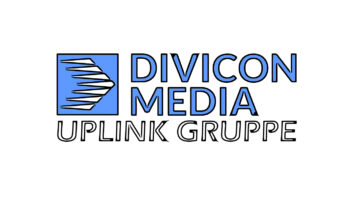
I’ve been wondering when radio groups would do something with iBiquity Digital’s Artist Experience, the ability to synch digital audio with images and text.
Now developer Allen Hartle tells me Greater Media has agreed to use his “JumpGate HD” RDS and HD Radio data processor to transmit Artist Experience data along with the HD signal of all of its FMs and HD2 channels.
That amounts to some 30 stations, spread out over five markets, Greater Media VP of Engineering Milford Smith tells me. Those markets are Boston (five HD1s and five HD2s), Philadelphia (four HD1s, four HD2s), Detroit (three HD1s, three HD2s), Charlotte (two HD1s) and New Jersey (four HD1s).
Greater Media intends to start installations in the fourth quarter of this year and “turn on” the service early in 2012.

Up to now, Clear Channel has been the sole radio group that I know of doing Artist Experience.
I talked to Clear Channel about Artist Experience at the spring NAB and reported that its stations are transmitting this advanced data application in “beta” mode in 18 markets. IBiquity told me at the spring show that Broadcast Electronics has an AE solution and the Broadcast Traffic Consortium was working on one. When iBiquity announced AE last fall, stations had to license album images from Sony Gracenote.
JumpGate HD builds on Hartle’s experience with RDS and iTunes Tagging, adding software code to its data processor to support AE. Hartle says he delayed starting work on the project until Jump2Go could secure a cost-effective source of artist images.
Hartle is working with Rovi, who now owns both the Muze and AMG database products, on the Artist Experience offering. He says the AE licensing fee charged by Jump2Go is $50 per month plus the one-time cost of the JumpGate HD data processor that replaces a Windows PC in your air chain.
The accompanying image shows how it works: A song plays, JumpGate collects the data information and pushes that back to its server. Rich data comes back and is pushed into various systems, be they and RDS or a streaming encoder, or an HD Radio signal. “We create more destinations for this rich data,” said Hartle.
Part of the push for using Artist Experience is to make radio’s displays on new receivers sexier and more interactive — or, as iBiquity’s Bob Struble has told me, it makes the radio display more like other displays being used in mobile and personal devices on the market now.

HD Radio devices on the market that can now display Artist Experience include the next-generation of the Insignia HD Radio player, the NSHD02, as well as the Cydle P29H MP3 player and the JVC KW-NT30HD and KW-NT50HDT car navigation HD Radios, and some OEM HD Radios in new cars coming on the market.
It takes about 30 seconds for the HD Radio system to transmit the graphic metadata to the tuner; however, it all happens in advance of the on-air event. The receiver buffers the image; when the on-air event changes, JumpGate HD sends a trigger, telling the receiver to now display the “queued” image. To the listener, the image change is “instant,” according to Hartle.
A second reason for stations to update their data transmissions and use AE, proponents say, is to make money. Stations theoretically can transmit more than album or DJ art to the newer HD Radio receiver displays; they can transmit metadata for special commercial images as well — and presumably charge advertisers more for those ads to stand out.
“We wanted a cost-effective solution. After the banking problems of 2008 it became apparent that if [Jump2Go] weren’t part of a solution to help stations make more money, we wouldn’t be in the building at all,” Hartle tells me.
Hartle’s company is conducting on-air testing of its technology on Entercom’s KNDD(FM), Seattle this week. The station also was an on-air test bed for Hartle’s earlier company, The Radio Experience (since acquired by BE) before the resurgence of RDS about a decade ago. With the new product, enabled receivers also display RT+ for those FMs transmitting RDS data.
He gave kudos to iBiquity for being collaborative and helping the process along, such as supplying him with proprietary receivers for in-house testing. “They’ve opened the doors to their technology and given us direct access to their developers. We’re meeting the people who write software code. It makes all the difference in the world,” he tells me.
I’m glad to hear more stations plan to do Artist Experience; it’s about time, given that receivers that can display the new features have been in the marketplace for a while.











